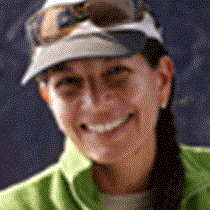Sombrero Chino & Santiago Islands
Just after sunrise, National Geographic Islander dropped anchor close to Sombrero Chino and the Bainbridge Islets. These interesting small volcanoes, probably formed when the sea level was lower, as parasitic cones of Santiago Island, are found near Sullivan Bay, a remarkable lava flow little more than a hundred years old. We start our morning with Zodiac rides along the coastline and against the backdrop of a stark landscape born of fire, in search of the famous Galápagos penguins and some other shore birds. Then we devoted the rest of the morning to deep-water snorkeling and swimming. The channel that separates Sombrero Chino from Santiago, with shallower and turquoise waters is consider one of the best spots to see marine iguanas feeing underwater, along with hundreds of fish such as yellow tailed razor fish, black stripped “salemas,” rainbow wrasses, parrot fish and many more. Those who were not enough brave to go for a deep-water snorkel had the chance to explore the island a little bit and enjoy the tiny but beautiful white coral sand beach with a fantastic landscape. Some sting rays and a couple of sea lions came to visit us as well as a solitary penguin that was swimming by, completely unaware of our presence.
After lunch, our naturalist Jan shared the interesting human history of islands, where we discovered the strange characters who played important roles shaping the history of the Galápagos Islands. A little while later, we repositioned our ship to the east coast of Santiago (also known as James and San Salvador), the fourth largest of the Galápagos Islands, to explore an area known as Sullivan Bay (named after James Sullivan, 2nd Lieutenant on board the H.M.S Beagle when she arrived with Charles Darwin in 1835.)
Walking over Sullivan Bay’s smooth “Pahoehoe” or ropy lava, among patches of sharp, broken up “AA” lava, cinder cones, spatter cones, hornitos, Pele’s hair, tree casts, we understood a little bit more about the arrival and establishment of species, how hard it is to colonize these islands and how fragile the island ecosystems are. Introduced animals such as goats, donkeys and pigs were, for many years, a major treat to the endemic species, especially giant tortoises. Now, thanks to donations from thousands of our guests through the Lindblad Expeditions-National Geographic Fund for Galápagos, the goats, donkeys and pigs are completely gone.
This enormous success says a lot about the role that caring travelers can play in saving special places on Earth, such as Galápagos with its unique biodiversity, but much more is left to be done!




